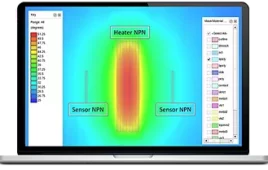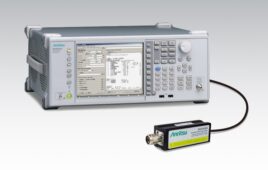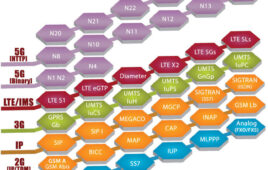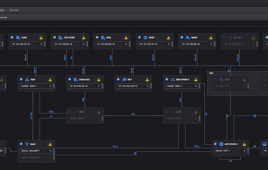We’ve been observing a shift in the workplace from a ‘one size fits all’ model to a more personalized experience in IT support and service. Users want to choose their own devices, and they expect the kind of experience they have with consumer devices. The mobile market in 2016 was the product of many factors converging, including increased pervasiveness of the Internet of Things, exponential growth in mobile apps, transformation to As-a-Service models, continued focus on mobile security, and the advent of the Cognitive Era. As we turn the page and focus look to 2017 and beyond, here are a few trends that organizations will be paying close attention to:
Organizations will need to support a greater range of devices as the type of devices employees use will shift as a reflection of a more mobile workforce
The worldwide mobile workforce is set to increase to 1.87 billion people or 42.5 percent of the global workforce in 2022, up from 38.8 percent in 2016 [1]. As workers become increasingly mobile, so does their primary work device. Employees are moving toward smaller, more portable devices, and tablets, wearables, and ultrabooks are expected to be the primary work devices by 2020 [2]. In particular, wearables will see considerable adoption as the segment moves beyond a fad into delivering purposeful experiences and driving economic efficiencies. The majority of wearable shipments in 2020 will be in the form of smart glasses and smart watches.
Workforce demographics are shifting with mobile first Millennials soon making up the majority of employees
By 2020, the workforce will be compromised of five different generations for the first time ever. And by 2025, over 70 percent of the workforce will be Millennials [3]. Millennials’ affinity for the digital world is the defining characteristic – they have grown up with broadband, smartphones, laptops, and social media being the norm and expect instant access to information whenever and wherever they wish. This is reflected in both their personal life and work life. They value similar things in an employer brand as they do in a consumer brand and will continue to drive consumerization in enterprise.
Third-party workplace productivity apps are gaining traction, but are creating security concerns
Similar to BYOD, employees are driving “BYOA” (Bring Your Own Application). The use of employee-founded applications are becoming prevalent, and is creating more security vulnerabilities. Security is an increasing issue as enterprise-grade security solutions remain a top priority of future mobile spending. Security is viewed as an integral part of mobile device investments.
Businesses are expected to begin testing AR/VR applications to improve productivity
IDC predicts that “in 2017, one-quarter of enterprise IT organizations will be testing augmented reality business apps for use on smartphones.” The firm cites the success of Pokemon Go as showing how AR can be successfully used on smartphones, which will reduce the initial hardware cost for AR.
AR/VR use cases of high interest include:
- Interactive Shopping
Providing consumers the ability to engage and experience products and services virtually instead of only physically. - Experiential Learning
New training and education methods through immersive instruction provided through both VR and AR environments. - Enhanced Worker Productivity
Instead of having physical manuals or data, users have information delivered on demand for completing complex tasks using AR. - Fan Experience and Athlete Performance
Enhanced fan experience through in home engagement while providing athlete training and improvement through AR information feedback. - Collaborative and Interactive Design
Product, building and civil engineering design aided through 3D interaction and planning using AR devices. - Logistics and Planning
Information for supply chain management and inventory picking delivered via an AR device.
Companies are increasingly tracking assets including their workers to improve logistics, workflow and to meet regulations
Employee tracking benefits include fall detection, location tracking, hazard zones, insurance, and regulatory compliance. Asset tracking benefits include workflow optimization, regulatory compliance (e.g. OBD-II plugs monitoring truck drivers to ensure that they are taking breaks), inventory management and asset use optimization.
Footnotes:
1. Strategy Analytics, Global Mobile Workforce Forecast Update 2016-2022 (Nov 2016)
2. Frost & Sullivan Office of the Future-Part 1: Wearables and Augmented Reality, 2016
3. Successfactors, The Global Workforce – Where are They Headed? (2015); Forrester Gear Up For Next-Generation Service Support: Millennials Are The New Frontier, 2016
Rich Esposito is IBM’s General Manager for Mobility Services.




